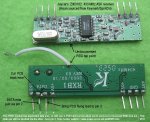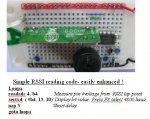http://www.hoperf.com/rf_fsk/fsk/
"A high precision local oscillator (LO) is generated by an integrated VCO and △∑ Fractional-N PLL synthesizer. The
synthesizer is designed to support configurable data rates, output frequency, frequency deviation, and Gaussian
filtering at any frequency between 240–960 MHz"
The modules do advertise having frequency hopping capability, so should in theory be capable of changing frequency fairly quickly.
"A high precision local oscillator (LO) is generated by an integrated VCO and △∑ Fractional-N PLL synthesizer. The
synthesizer is designed to support configurable data rates, output frequency, frequency deviation, and Gaussian
filtering at any frequency between 240–960 MHz"
The modules do advertise having frequency hopping capability, so should in theory be capable of changing frequency fairly quickly.


